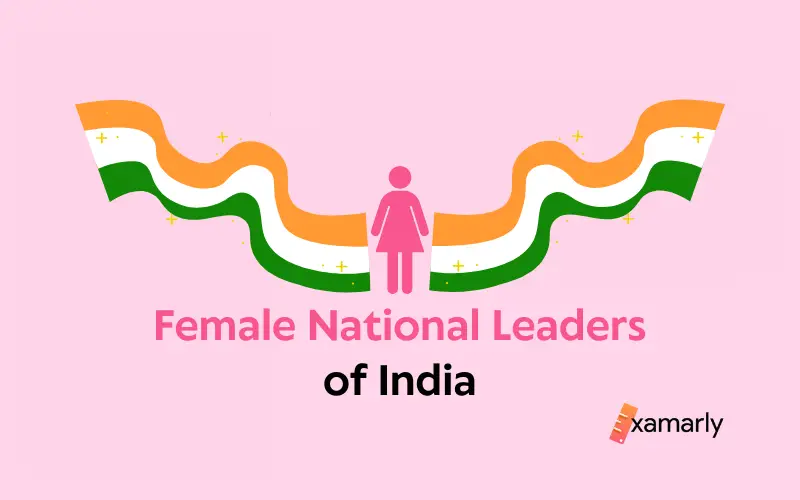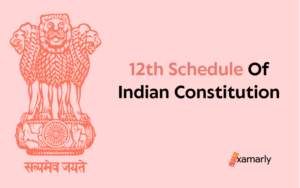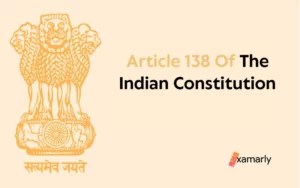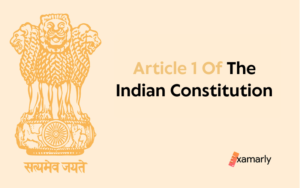A true leader is marked by the qualities of courage, selflessness, and unhindered dedication. India has had the fortune of being gifted with many such eminent leaders. Having clear knowledge on the important men & women in Indian history is important from the UPSC point of view.
In India’s governance as a free and independent country, the contributions of women are unseparable. Along with being capable leaders, women have also inspired many other men and women alike to follow their path.
There are two categories to factor in here. Many courageous women have put in efforts to free India from the British Rule. Also, many brave women have stood out as flagbearers of the Independent India.
In this article on female national leaders of India, we will go through both the categories of freedom fighters and political leaders. The goal of this article is to emphasize on how they rose into national importance despite the conditions of women and the limitations put upon them by society.
- 15 Female National Leaders of India : Pre-Independence
- 1. Rani Lakshmi Bai of Jhansi
- 2. Jhalkari Bai
- 3. Abadi Bano Begum
- 4. Begum Hazrat Mahal
- 5. Basanti Devi
- 6. Kamaladevi Chattopadhyay
- 7. Ashalata Sen
- 8. Sarojini Naidu
- 9. Aruna Asaf Ali
- 10. Bhikaiji Cama
- 11. Annie Besant
- 12. Moolmati
- 13. Kittur Rani Chennamma
- 14. Lakshmi Sahgal
- 15. Ramadevi Choudhary
- 10 Female National Leaders of India : Post-Independence
- 1. Indira Gandhi
- 2. Sonia Gandhi
- 3. Sushma Swaraj
- 4. Mamata Bannerjee
- 5. Sheila Dikshit
- 6. Jayalalitha Jayaram
- 7. Mayawati
- 8. Vasundhara Raje Scindia
- 9. Pratibha Patil
- 10. Nirmala Sitharaman
- Summary
- FAQs on Female National Leaders of India
- Who was the first female national leader of India?
- How many female national leaders has India had?
- Why are there so few female national leaders in India?
- What impact have female national leaders had on India?
- What can be done to increase the representation of women in national leadership positions in India?
15 Female National Leaders of India : Pre-Independence
This list consists of women that led the national movement against the British Colonial Rule & eventually to the freedom of India.
1. Rani Lakshmi Bai of Jhansi
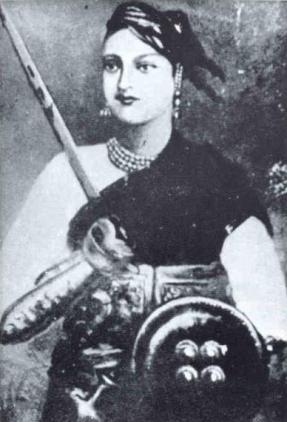
Lakshmibai, the Rani of Jhansi, was an Indian queen who served as the Maharani consort of the Maratha princely state of Jhansi as the wife of Maharaja Gangadhar Rao from 1843 until 1853. She was a key player in the 1857 Indian Rebellion and became a symbol of opposition to the British Rule for Indian nationalists.
- Rani Lakshmibai was born Manikarnika Tambe and was fondly called Manu by her family and friends.
- In 1842, Manikarnika married the Maharaja of Jhansi, Gangadhar Rao Newalkar, and was renamed Lakshmibai in honor of the Hindu deity.
- She gave birth to a baby called Damodar Rao in 1851, but he died four months later owing to a severe ailment.
- On the day before the Maharaja died, he adopted a boy named Anand Rao, who was renamed, Damodar Rao.
- The adoption took place in the presence of a British political officer who was given a letter from the Maharaja ordering that the child is treated with respect and that the governance of Jhansi is granted to his widow for the rest of her life.
- The British governor-general of India, Lord Dalhousie, refused to acknowledge the chosen successor and seized Jhansi in line with the concept of lapse.
- The Doctrine of Lapse was followed by the British East India Company‘s annexation of Jhansi.
- This doctrine deemed that Indian kingdoms with no male heir were misruled and could be annexed. This led to the annexation of Jhansi.
- Although Rani’s petition to Britain was not accepted, it was not without merit. After Jhansi was annexed to the British, she was forced from her palace to take a pension of 60,000 Rupees per year.
- The East India Company dispatched an agent to the little monarchy to handle administrative concerns.
The 22-year-old queen would not hand over Jhansi to the British. Rani Lakshmibai was proclaimed regent of Jhansi shortly after the start of the insurrection in Meerut in 1857, and she reigned on behalf of the young heir. She quickly gathered her forces and took command of the rebels in the Bundelkhand region after joining the insurrection against the British.
In the 1857 rebellion, she fought for freedom against the British. A ferocious fight ensued as the company’s men encircled the fort of Jhansi. Even after her men were overrun by the invading invaders, Lakshmi Bai refused to surrender. Lakshmi Bai managed to flee the fort with a small number of royal guards and went east, where she was joined by other rebels.
Tantia Tope and Lakshmi Bai then launched a successful assault on Gwalior’s city-fortress. Following the capture of Gwalior, Lakshmi Bai marched east to Morar to face a British assault headed by Hugh Rose. She fought a tough battle disguised as a man and was killed on the battlefield.
The Rani of Jhansi was killed in battle on the 17th of June 1858. In the wake of her death, she was a symbol of resistance in the long Indian freedom struggle. Although her death is tragic, her sacrifice has remained a symbol to India of the power of female resistance. Rani Lakshmibai popularly known as Jhansi Rani was an iconic figure in Indian history.
You might also like to read about: Women Freedom Fighters of India.
2. Jhalkari Bai

Jhalkari Bai was a brave and fearless woman who played a significant role in the Indian Rebellion of 1857 against the British rule. She was born in a village in Uttar Pradesh and grew up in a family of martial artists. She was trained in horse riding, sword fighting, and archery, which later helped her in fighting against the British.
- When the Indian Rebellion of 1857 began, Jhalkari Bai joined the army of the Rani of Jhansi, Laxmibai, and quickly rose through the ranks due to her bravery and strategic abilities.
- She disguised herself as the queen during battles and led the army into battles against the British.
- She was known for her skill with a sword and her ability to inspire soldiers with her speeches.
- Jhalkari Bai’s most famous exploit was during the Battle of Gwalior. When the Rani of Jhansi was fatally injured, Jhalkari Bai disguised herself as the queen and led the troops in a charge against the British forces. Her bravery and skill in battle helped the Indian forces win the battle, but unfortunately, she was captured by the British.
Jhalkari Bai’s legend has lived on, and she is remembered as a symbol of women’s bravery and strength. Her story has been told in many folk songs and poems, and she has been the subject of many books and movies. She remains an inspiration to women in India, and her legacy serves as a reminder of the crucial role that women have played in India’s struggle for independence.
Read Also: Unknown Female Freedom Fighters of India.
3. Abadi Bano Begum
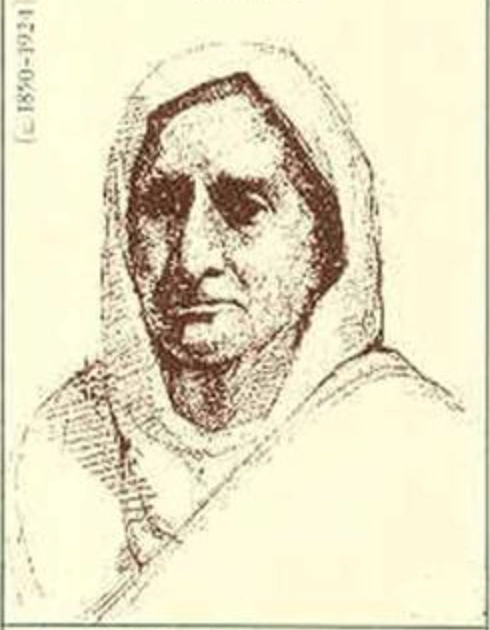
Abadi Bano Begum was a courageous and visionary woman who played a significant role in India’s freedom struggle. She was born in 1899 in Allahabad, Uttar Pradesh, and grew up in a family of freedom fighters. Her father, Syed Ahmad Khan, was a prominent lawyer and a member of the Indian National Congress.
- She was deeply influenced by the teachings of Mahatma Gandhi and became an active participant in the non-violent civil disobedience movement.
- She organized several peaceful protests and rallies, advocating for India’s independence from British rule.
- One of her most notable contributions was the role she played during the Quit India Movement in 1942. She was one of the leaders of the movement in Allahabad and played a crucial role in organizing the protests and demonstrations.
- She was arrested along with several other leaders and imprisoned for more than two years.
- After India gained independence in 1947, she continued to work for the betterment of society.
She was a champion of women’s rights and worked to improve the status of women in Indian society and played an active role in promoting education and healthcare in rural areas. Her contributions to India’s freedom struggle and her lifelong dedication to social causes have made her an inspiration to many. She remains a symbol of courage, dedication, and the spirit of service to the nation.
Our article on Famous Slogans of Female Freedom Fighters might interest you more.
4. Begum Hazrat Mahal
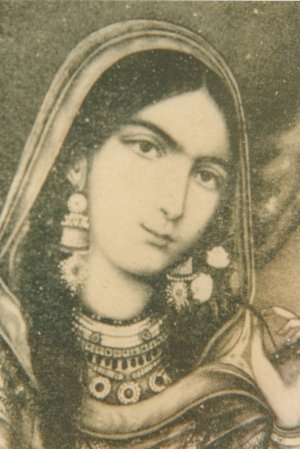
Begum Hazrat Mahal was a prominent female freedom fighter who played a crucial role in the Indian Rebellion of 1857 against the British rule. She was born in 1820 in Faizabad, Uttar Pradesh, and was married to Nawab Wajid Ali Shah of Awadh, who was exiled to Calcutta by the British in 1856.
- When the Indian Rebellion of 1857 broke out, she became one of the leaders of the rebellion in Lucknow.
- She organized an army of rebel soldiers and played a key role in several battles against the British, including the Siege of Lucknow.
- Her most notable contribution was during the Siege of Lucknow, where she led the rebellion against the British forces. She organized the defense of the city and held off the British forces for several months, using her strategic and leadership skills to inspire the rebels. She also provided protection to the women and children of the city during the siege.
- After the rebellion was suppressed by the British, she was forced to flee to Nepal, where she continued to lead the resistance against the British. She died in Nepal in 1879, but her legacy lives on as a symbol of courage and resistance against colonial rule.
Begum Hazrat Mahal remains an inspiration to many in India, especially to women. Her contributions to the Indian Rebellion of 1857 and her unwavering determination in the face of adversity have made her an icon of the Indian freedom struggle.
You might also like to read: First Women Freedom Fighter of India.
5. Basanti Devi
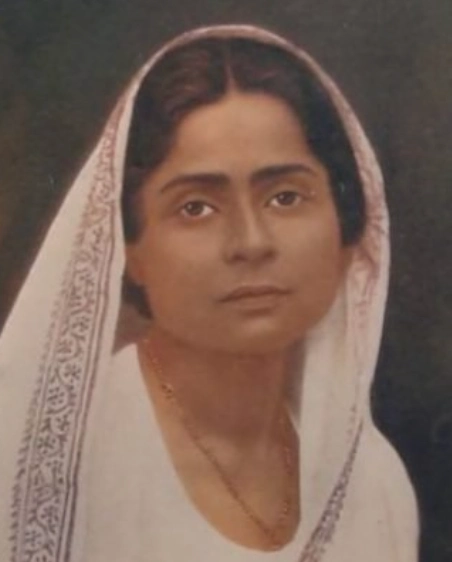
Basanti Devi was an Indian independence activist. She became involved in many political and social activities and continued to engage in social service after independence. In 1973, she was awarded the Padma Vibhushan. Interestingly, she was the first Indian woman to be arrested for selling khadi.
- She was married to Chittaranjan Das, a known activist. Following her husband, Basanti Devi became involved in several campaigns such as the Civil Disobedience Movement and the Khilafat Movement, as well as the Nagpur session of the Indian National Congress in 1920.
- The next year, she collaborated with Devi sisters, Urmila Devi and Sunita Devi, to build the “Nari Karma Mandir,” a training facility for women activists.
- The Indian National Congress advocated for strikes and a ban on foreign goods during the Non-cooperation campaign in 1921.
- In Kolkata, small groups of five volunteers were engaged to sell khadi, the hand-spun clothing, on the streets of Kolkata. Das, the local movement’s prominent figure, chose to have his wife Basanti Devi run one of these groups. This further led to her arrest and subsequent release.
- To help women, she formed ‘Mahila Sangthans’ in 50 villages. They helped local women engage in social work.
- She traveled the Kosi region for over 20 years and sought to protect the forest, empower women and end liquor consumption.
The changes she brought have been gradual, but they are significant. Although she had been involved in many political movements during her husband’s life, she ended her active participation after his death. Basanti Devi is often praised today for her contributions to society beyond politics.
Also read: Female Social Reformers of India.
6. Kamaladevi Chattopadhyay
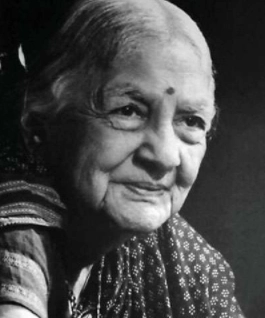
Kamaladevi Chattopadhyay was a prominent Indian freedom fighter, social activist, and cultural ambassador. She was born in 1903 in Mangalore, Karnataka, and was one of the most dynamic and multifaceted personalities of the Indian freedom struggle.
- Her contributions to India’s freedom struggle were diverse and far-reaching.
- She was an active member of the Indian National Congress and participated in the Salt Satyagraha and the Quit India Movement.
- She also worked tirelessly towards women’s empowerment and was instrumental in the formation of the All India Women’s Conference.
- She was also a pioneering figure in the field of arts and culture. She believed that the preservation and promotion of India’s rich cultural heritage was essential to the country’s identity and worked towards the revival of traditional arts and handicrafts.
- She was the founder of the Indian Handicrafts Board and the National School of Drama, which played a crucial role in promoting Indian art and culture.
Her tireless efforts towards women’s empowerment and the promotion of Indian art and culture earned her several accolades, including the Padma Bhushan and the Ramon Magsaysay Award. Her contributions to India’s freedom struggle and her unwavering commitment to social causes continue to inspire people across India and beyond.
You might also like to read about: Women Freedom Fighters of Karnataka.
7. Ashalata Sen
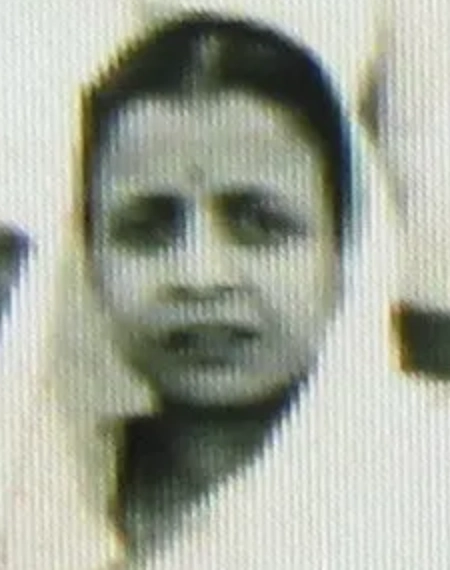
Ashalata Sen, an activist, poet, and social worker was a pioneer in the Indian independence movement. She fought for human rights, education, and gender equality. She was born in Noakhali to educated parents.
- Sen took to writing at a very young age and wrote a poem against the partition of Bengal at the age of 10. She also began translating Valmiki’s Ramayana into Bengali.
- In the latter years of her life, she wrote an autobiography describing her experiences.
- Nabashashi Devi, Ashalata’s grandmother, encouraged and inspired her to pursue politics.
- Following Bengal’s division in 1905, Nabashashi Devi, Sushila Sen, Kamalkamini Gupta, and others formed women’s groups and boycotted foreign products.
- Nabashashi Devi enrolled her granddaughter Ashalata into the campaign and required her to sign a promise to reject imported clothing and support local businesses. Ashalata joined the nationalist movement and went around convincing rural ladies to take the vow as well.
- In the 1930s, Ashalata participated in Gandhi’s salt march.
- She wished to organize women and educate them on their rights and capacities as she understood that no movement could thrive unless women were engaged. As a result, she founded several women’s organizations, including Jagrata Sebikadal, Rashtrio Mahila Sangha, Narikarmi Shiksha Kendra, and Congress Mahila Sangha.
- During the 1943 famine, she was heavily active in relief efforts.
- She was elected uncontested to the Bengal Legislative Assembly in 1946.
- Unlike many Hindus who moved to India in the aftermath of the partition, she remained in Dhaka.
- She was elected to the East Pakistan Assembly in 1947. Meanwhile, she maintained her charitable work.
Her activities were instrumental in helping to rehabilitate abducted women in Bengal. She inspired many Gandhian activists in her lifetime. She was jailed several times but remained undeterred. As a result of her tireless activism, she won many awards and made her country proud.
Also read: Female Freedom Fighters of Bengal.
8. Sarojini Naidu
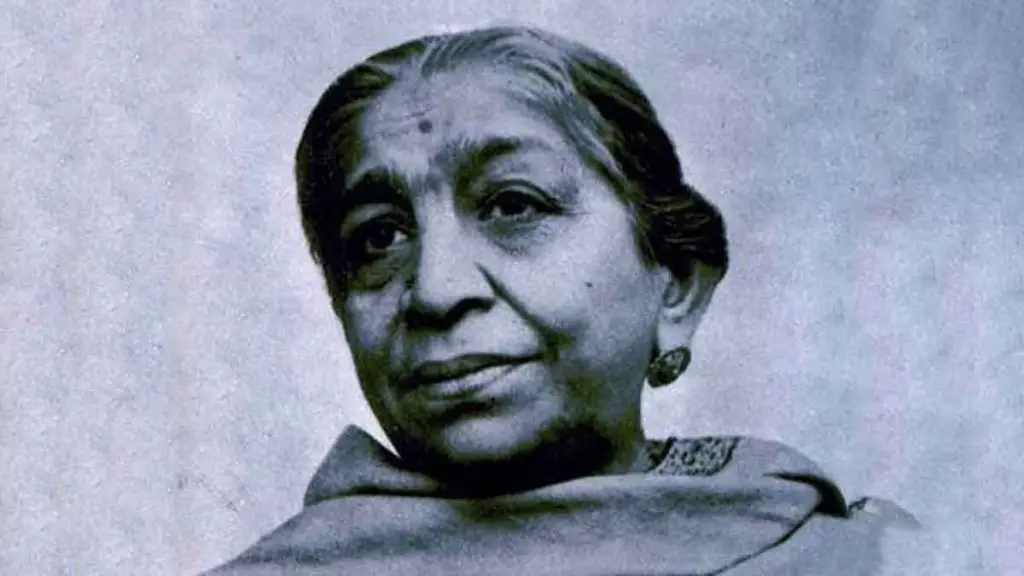
Sarojini was an Indian poet and activist. She was an advocate for women’s emancipation, civil rights, as well as anti-imperialist ideologies. She is remembered as a major figure in India’s fight for independence. Her prowess as a poet fetched & inspired Gandhi Ji to give her the title of “Nightingale of India”.
- She was the Indian National Congress’s second female president and the first Indian woman to preside over an INC conference.
- She was born in Hyderabad. She received a scholarship to London College and studied at Girton College, Cambridge. She returned to India in 1898 and became an influential figure in the Nationalist movement.
- That same year, she married Govindaraju Naidu, a physician she met in England in an inter-caste marriage. Both of their families approved of their relationship and marriage.
- She was a great orator. At the beginning of her political career in 1904, Naidu became an increasingly prominent orator, advocating for Indian independence and women’s rights, particularly education for women. She often used Nyaya’s reasoning to explain her oratory.
- Sarojini was active in India’s independence movement. Her meeting with Gandhi made her an ardent follower of him and his principles. She joined Gandhi’s peaceful satyagraha campaign after 1917 to protest British tyranny. She took part in the Indian movement against cooperation the following year.
- Naidu and other female activists, such as Kamaladevi Chattopadhyay and Khurshed Naoroji joined the march. Gandhi named Naidu as the new campaign leader after his imprisonment on 6 April 1930.
- Naidu was imprisoned twice, once in 1932 and later for her involvement in the Quit India Movement in 1942. She spent 21 months behind bars.
Naidu became the nation of India’s first female governor when she was chosen to lead the United Provinces (modern-day Uttar Pradesh) after the country gained independence from British rule in 1947. She held her position until her passing in March 1949. She was a strong defender of women’s freedom and continued to fight on their behalf.
Related Article: Female Freedom Fighters of Telangana.
9. Aruna Asaf Ali
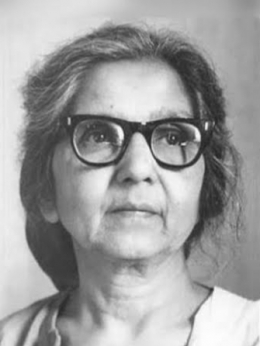
Aruna Asaf Ali was an important figure in Indian history and played a major role in the freedom movement. A political activist, publisher, and educator, she was a prominent participant in the Indian independence movement.
- Her most memorable moment was when she hoisted the Indian national flag at the Gowalia Tank Maidan in Bombay during the Quit India Movement of 1942.
- She was born in Kalka, Punjab. She was born into a Bengali Brahmo upper-class family. She began working as a teacher at the Gokhale Memorial School in Calcutta after receiving her degree from Nainital College.
- In Allahabad, she met Asaf Ali, a prominent member of the Congress party. Despite parental resistance on the basis of faith and age, they were married in 1928.
- Her activism throughout the Indian Independence Movement can be largely attributed back to her husband, who worked for freedom.
- She led processions and addressed public meetings during the Salt Satygraha, 1930. Despite her commitment to the freedom cause, Aruna was accused of being a vagrant.
- The Gandhi-Irwin Pact that guaranteed all political prisoners would be allowed to release her was not effective. In fact, she was held in jail for one year. Gandhi intervened later and freed her.
The Quit India resolution was adopted by the All India Congress Committee during the Bombay session on August 8, 1942. The government’s response was to detain all of the Congress Working Committee members and prominent leaders in an effort to thwart the movement’s success.
The Congress flag was raised at the Gowalia Tank Maidan on August 9 by the young Aruna Asaf Ali, who also presided over the remainder of the session. The movement officially began at this point. At the session, the cops opened fire on the crowd. Due to her courage in the face of peril, Aruna was termed the Heroine of the 1942 campaign and, in her later years, the Grand Old Lady of the Independence struggle.
Her achievements were widely celebrated. She was a prominent member of the Communist Party of India and the Socialist Party. Her commitment to equality in society led her to be awarded Padma Vibhushan in 1992 and the Bharat Ratna posthumously. She was also honored with the International Lenin Peace Price and the Jawaharlal Nehru Award for International Understanding in 1964 and 1991 respectively.
Read all about her in our blog on Aruna Asaf Ali Freedom Fighter.
10. Bhikaiji Cama
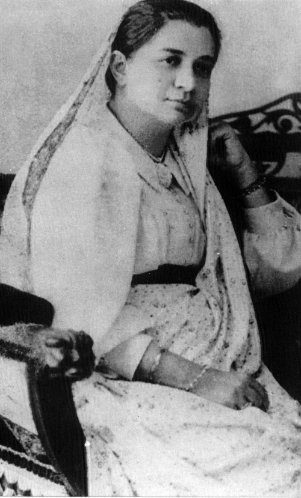
A prominent figure in the Indian independence movement was the Bhikaiji Rustom Cama, also known as Madam Cama. She was well-known for her strength, courage, and determination. In addition to her strong and influential leadership, she also led the nation’s independence movements.
- On 21 August 1907, she raised the first version of India’s flag at an International Socialist Conference in Stuttgart, Germany.
- She was born into a prosperous Parsi family. Her father, Sorabji Framji Patel, was a well-known businessman. Growing up, Bhikaiji was influenced by the Indian nationalist movement. She had a gift for languages and quickly mastered the art of representing her nation’s concerns in many contexts.
- Later, she wed renowned lawyer Rustomji Cama in 1885, but their disagreements stemmed from her engagement in social concern. Bhikaiji was a patriot, in contrast to Mr. Cama, who enjoyed and cherished the British culture and believed that they had greatly benefited India. Their ideological differences led to personal unhappiness and Cama was often seen devoting her time and energy toward social work and social reform.
- Famine struck the Bombay Presidency in October 1896, followed quickly by the bubonic plague. Bhikhaiji joined one of the several teams operating out of Grant Medical College to help the sick and immunize the healthy.
- Later, Cama caught the disease, but she made it through.
- At the second Socialist Congress, which was held in Stuttgart, Germany, on August 22, 1907, Cama spoke about the devastation caused by a famine that had hit the Indian subcontinent. She raised what she referred to as the “Flag of Indian Independence” in a plea for equality, human rights, and independence from Great Britain.
Alongside her strong presence as an Indian freedom fighter in India and abroad, she strongly advocated for women’s rights. She relocated to Paris in 1909 after hearing rumors that she might be expelled from England. There, her residence served as the center of operations for the movement for Indian independence.
She assisted Har Dayal in launching Bande Mataram, a revolutionary newspaper that was smuggled into India from London. She was given permission to go back to India in 1935 when she was 75 years old, where she passed away the following year.
You might also like to read about: Female Freedom Fighters of Maharashtra.
11. Annie Besant
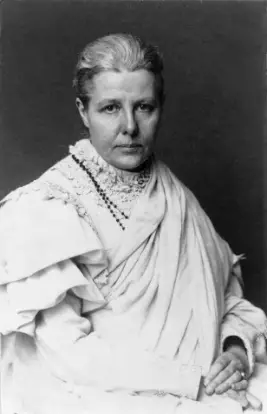
Annie Besant, née Wood, was a British socialist, theosophist, women’s rights advocate, author, speaker, political party member, educator, and philanthropist. She was a fierce advocate for freedom and self-rule in both Ireland and India. She was also a prolific author, having written over 300 books and pamphlets.
- She made contributions in the field of education by helping to establish the Banaras Hindu University.
- She was a student of theosophy in her youth. After Besant met Helena Blavatsky in 1890, her interest in theosophy increased. She became a member of the Theosophical Society and a notable lecturer on the topic. She visited India for her theosophical-related studies.
- She contributed to the founding of the Central Hindu School in 1898 and the Hyderabad (Sind) National Collegiate Board in 1922 in Bombay, India (now Mumbai).
- She founded Le Droit Humain, the International Order of Co-first Freemasonry’s lodge outside of the United States, in 1902. She opened lodges throughout the course of the following several years around the British Empire.
- She was elected president of the Theosophical Society in 1907 when Adyar was home to its global headquarters at the time.
- She later became president and activist in the Indian independence movement. Besant joined the Indian National Congress and also got interested in Indian politics.
- She assisted in establishing the Home Rule League in 1914, when World War I broke out, to promote democracy in India and dominion status within the British Empire.
- In late 1917, as a result, she was chosen to lead the Indian National Congress.
- Jiddu Krishnamurti, her protégé and adopted son, whom she regarded as the new Messiah and Buddha’s incarnation, joined Besant on a trip to the United States in the late 1920s. These assertions were denied by Krishnamurti in 1929.
Until her death in 1933, she persisted in advocating for theosophical causes and Indian independence after the war. She was the first woman ever to serve as president at the Indian National Congress. While she was a social activist, Besant also had a personal commitment to helping people.
Also read: Female Freedom Fighters of Goa.
12. Moolmati
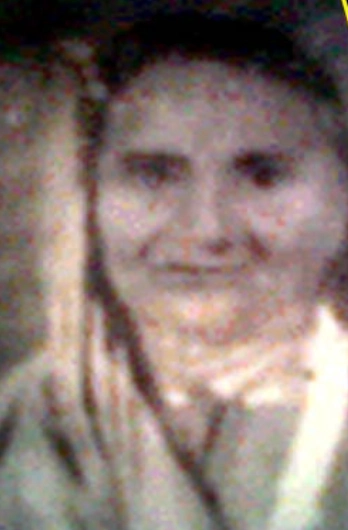
Moolmati was a legendary female warrior who fought against the British colonial forces during the Indian Rebellion of 1857. She was born in the early 1800s in the village of Baragaon in the Pratapgarh district of Uttar Pradesh, India.
- According to folklore, Moolmati was a skilled archer and spear-wielder who was trained in combat by her father.
- She was married at a young age and settled down in her husband’s village, but when the Indian Rebellion of 1857 broke out, she joined the fight against the British alongside her husband and other local rebels.
- She was known for her bravery and fighting skills, and she played a crucial role in several battles against the British forces.
- In one famous battle, she is said to have single-handedly taken down several British soldiers with her bow and arrow, inspiring her fellow rebels to fight harder and ultimately win the battle.
Despite her bravery and contributions to the rebellion, little is known about Moolmati’s life beyond the folklore and oral traditions. Her story, however, continues to inspire people in India, particularly in the state of Uttar Pradesh, where she is celebrated as a symbol of female strength and resilience.
Our article on National Leaders of India will help enhance your UPSC preparation.
13. Kittur Rani Chennamma
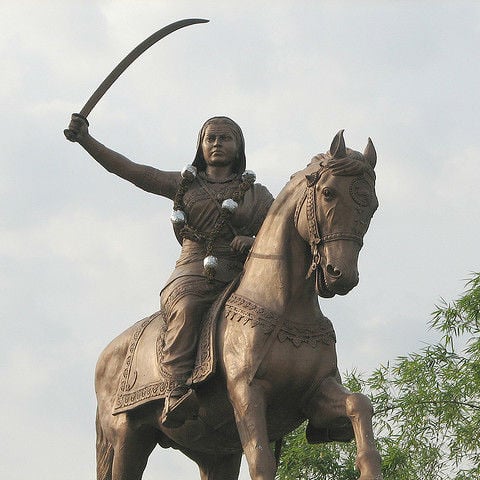
Kittur Rani Chennamma was a queen and warrior from the Kittur kingdom in what is now the state of Karnataka, India. She was born in 1778 and was the only daughter of the Kittur king Mallasarja. After her husband’s death, Rani Chennamma took on the role of queen and led her kingdom in the fight against the British East India Company.
- In 1824, the British East India Company annexed the neighboring state of Satara and demanded that Kittur pay tribute to them as well. Rani Chennamma refused to submit to British demands, leading to a rebellion against British rule.
- She fought against the British forces in several battles, including the Battle of Kittur, which lasted for three weeks. Despite being outnumbered and outgunned, Rani Chennamma and her army put up a fierce resistance against the British forces.
- However, the Kittur army was eventually defeated, and Rani Chennamma was captured and imprisoned. She was released from prison after making a treaty with the British, but her kingdom was annexed by the British East India Company.
- Her bravery and leadership in the face of British colonialism made her a symbol of resistance against British rule in India.
She continues to be celebrated as a folk hero in Karnataka and is considered a pioneer of India’s freedom struggle. In 2007, the Indian government posthumously honored her with the “Rani Chennamma Award” for outstanding women achievers in India.
You might also like to read: South Indian Women Freedom Fighters.
14. Lakshmi Sahgal
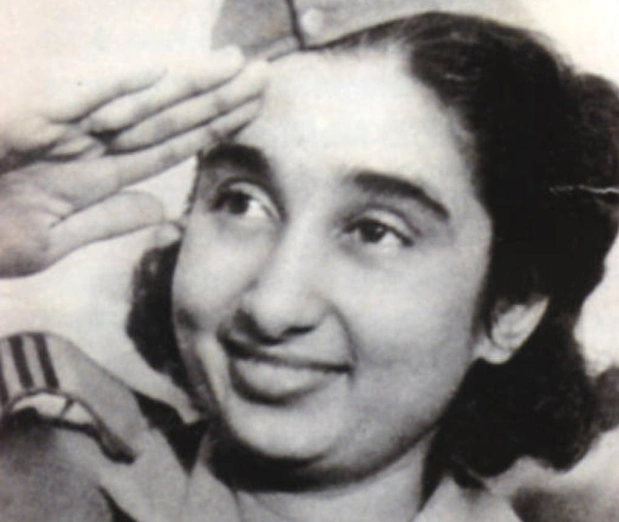
Lakshmi Sahgal or Laxmi Sehgal was a leader in the Indian independence struggle, a member of the Indian National Army, and the Azad Hind administration’s Minister of Women’s Affairs. Because of her status when she was taken prisoner in Burma during the Second World War, she is often referred to as Captain Lakshmi in India.
- She was born in Madras, under the name Lakshmi Swaminathan, to a Tamil brahmin father and a Malayali Nair mother. Her parents were Ammu Swaminathan, a social worker and campaigner for independence from the Vadakkath family, and S. Swaminathan, a lawyer who practiced criminal law at the Madras High Court.
- She attended Queen Mary’s College before deciding to pursue a career in medicine. After graduation, she practiced medicine in Chennai’s Triplicane Government Kasturba Gandhi Hospital.
- She departed for Singapore in 1940, where she came across several of Subash Chandra Bose‘s Indian National Army soldiers. She joined the Indian National Army League of Singapore and helped the people during the surrender of Singapore.
- Subhash Chandra Bose landed in Singapore on July 2, 1943, amid this backdrop. Lakshmi requested a meeting with Bose after learning that he wanted to enlist women in the organization and left with the order to form a women’s regiment that would be known as the Rani of Jhansi regiment.
- Dr. Lakshmi Swaminathan was renamed Captain Lakshmi and received a warm reception from women who wanted to join the all-female brigade. This name and identity would stick with her for the rest of her life. Lakshmi became a captain of the Indian National Army.
- She joined the Communist Party of India (Marxist) in 1971 and served as the group’s representative in the Rajya Sabha.
- She participated in the All India Democratic Women’s Association’s formation in 1981 and oversaw several of its initiatives and campaigns.
- Sahgal was nominated as a candidate for president by the Revolutionary Socialist Party, the Communist Party of India, the Communist Party of India (Marxist), and the All India Forward Bloc in 2002.
- She was the only challenger against A.P.J. Abdul Kalam, who won.
She died from cardiac arrest on 23 July 2012. Capt. Laxmi Sehgal was a fervent advocate of socialism and equality.
Related Article: Female Freedom Fighters of Tamil Nadu.
15. Ramadevi Choudhary
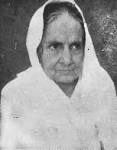
Ramadevi Choudhary is a name people associate with the Indian social reformer and freedom fighter. She is fondly called Maa by the people of Orissa. Ramadevi Women’s University, located in Bhubhaneswar, is named after her.
- She was married to a Deputy Collector named Gopabandhu Choudhury. In 1921, she and her husband joined the Indian independence movement.
- Mahatma Gandhi had a significant impact on her, and she actively participated in the Non-Cooperation Movement.
- She actively participated in the Orissa-level Salt Satyagraha campaign in 1930.
- She was a part of the Harijan Sewa Sangh, an organization aimed at eradicating untouchability.
- Gandhiji gave the name Sewaghar to her Ashram, which she founded in Bari.
- Rama Devi’s whole family, including her husband Gopabandhu Choudhury, was detained during the 1942 Quit India Movement.
- Following Kasturba Gandhi‘s passing, Gandhiji tasked her with serving as the Kasturba Trust’s representative in Orissa.
- Rama Devi committed herself to the Bhoodan and Gramdan movements of Acharya Vinoba Bhave after India gained its independence in 1947.
- She, along with Nilamani Routray and Harekrushna Mahatab, published their own newspapers as a form of protest during the Emergency.
She was involved in several projects, including the construction of the Shishu Vihar primary school and cancer hospital. She died at the age of 68 on July 22, 1985. She has since been commemorated through the Rama Devi Women’s University.
Also read: Women Freedom Fighters of Odisha.
10 Female National Leaders of India : Post-Independence
This list mentions all the important women political leaders that made the governance of independent India smooth & balanced.
1. Indira Gandhi
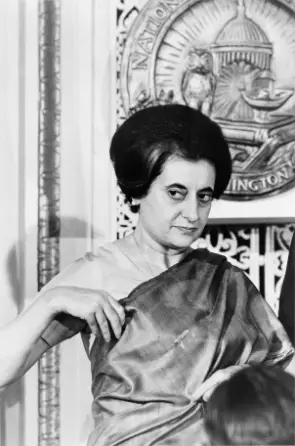
Indira Priyadarshini Gandhi was a prominent member of the Indian National Congress and a politician from India. She was chosen as India’s third prime minister in 1966, making her the country’s first and only female head of state to date.
- Jawaharlal Nehru, India’s first prime minister, was her father.
- She was the second-longest-serving Indian prime minister after her father, in office from January 1966 to March 1977 and again from January 1980 till her murder in October 1984.
- She served as Nehru’s chief of staff from 1947 to 1964 and was his go-to travel companion on many of his international excursions. In 1959, she was chosen to lead the Indian National Congress.
- She was nominated to the Rajya Sabha (upper house) upon the death of her father in 1964, and she later joined Lal Bahadur Shastri‘s government as the Minister of Information and Broadcasting.
- As a result of her victory against Morarji Desai in the Congress Party’s legislative leadership contest held in early 1966 (after Shastri’s passing), she succeeded Shastri as India’s prime minister after his passing.
- Her political rigidity and unparalleled centralization of power during her time as prime minister were well-known. She launched a war with Pakistan in support of the independence movement.
- This led to an Indian victory and along with the founding of Bangladesh, the world witnessed a rise in India’s dominance to the point that it became the only regional power in South Asia.
- From 1975 to 1977, she imposed a state of emergency during which time basic civil freedoms were suspended and the press was subject to censorship. Throughout the emergency, atrocities were committed on a large scale.
- After transparent elections in 1980, she reclaimed her position as leader. Gandhi was killed by her own bodyguards and Sikh nationalists after directing Operation Blue Star to take military action against the Golden Temple.
- Despite being an exceptional politician, Indira was plagued by factionalism and problems within her party. Her literacy and antipoverty movements, both of which were partly successful, created a complicated political environment in postcolonial India.
The nation’s divisions were exacerbated due to growing discontent among Sikhs. She was unable to get her message across to the Sikh community. She was ultimately killed for her views about equality and the nation’s future.
Throughout her career, she received many honors, including the Bharat Ratna, the Mexican Academy Award, the 2nd Annual Medal from the FAO, and the Sahitya Vachaspati Award from the Nagari Pracharini Sabha, and the Mothers’ Award from the U.S.A.
In 1953, she was awarded the Isabella d’Este Award to recognize her diplomatic efforts. In 1971, Indira was ranked as the most respected woman by Gallup Poll. She won the title of “Woman of the Millennium” in a 1999 BBC online vote and was listed by Time magazine as one of the 100 most influential women of the 20th century in 2020.
If you need help with your UPSC Preparation Strategy, our blog on the same topic will be super helpful for you.
2. Sonia Gandhi
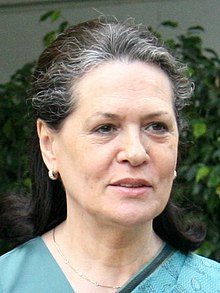
Indian politician Sonia Gandhi was the leader of the Indian National Congress, which has ruled India for the majority of its post-independence history. She assumed the role of party leader in 1998, seven years after her husband and former Indian Prime Minister Rajiv Gandhi was assassinated.
- She was brought up in a Roman Catholic household and was born in an Italian hamlet close to Vicenza. She finished her elementary education at local schools before relocating for language study to Cambridge, England, where she subsequently fell in love with Rajiv Gandhi and wed him in 1968.
- She then relocated to India and began residing with her mother-in-law, Indira Gandhi, who was India’s prime minister at the time. But even when her husband was the prime minister of India, she stayed out of the spotlight.
- She was asked to lead the party by Congress officials after her husband was killed, but she rejected. After considerable coaxing from the party, she finally accepted to enter politics in 1997.
- The following year, she was nominated for party president and triumphed against Jitendra Prasada in the election. After the 2004 elections, the Congress, under her direction, joined forces with other left-leaning political parties to establish the government. Since then, she has been given credit for helping to create the United Progressive Alliance (UPA), which returned to power in 2009.
- She chaired the ruling coalition and the National Advisory Council after declining the position of premier following the 2004 victory.
- Sonia Gandhi’s leadership style has inspired many. Like her husband, her name has become synonymous with success. She is known for her ability to rally crowds.
- From 2004 until 2014, she was regarded as India’s most influential politician, and she was included in many lists of the world’s most powerful men and women by publications like Forbes and The Times.
- Due to health issues, Gandhi started to lessen her involvement in politics during the second half of the UPA government. She left her position as president of the Congress in December 2017 but returned to lead the party in August 2019.
She is frequently named among the most powerful women in the world, despite the fact that she never held any official office in the Indian government. She has been commonly referred to be one of the nation’s most prominent politicians.
If you’re preparing for the UPSC, our blog on All About UPSC Exam will give you a clear idea about it.
3. Sushma Swaraj
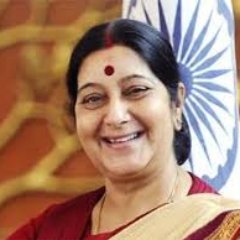
Sushma Swaraj was an Indian politician. She was also a lawyer and diplomat. She was the Minister for External Affairs in Narendra Modi‘s first government. She was a senior member of the Bharatiya Janata Party and was the second woman to hold this position after Indira Gandhi. She was chosen 3 times to serve in the Legislative Assembly and 7 times to serve as a Member of Parliament.
- She was appointed as the youngest cabinet minister of the Indian state of Haryana in 1977 at the age of 25.
- She was Delhi’s first female Chief Minister during her brief tenure as the city’s Fifth Chief Minister in 1998.
- She was born in Haryana in 1952. Later, she joined politics as a Janata Party Member and was a Haryana legislator from 1977 to 1983. She led the opposition against the Emergency. She has sworn in as a cabinet minister in the Janata Party administration presided over by the then-chief minister Devi Lal in July 1977.
- Between 1977 to 1979, she served as minister of labor and employment. From 1987 until 1990, she served as Minister of Education, Food, and Civil Supplies. At the age of 27, she was elected State President of the Janata Party (Haryana).
- From 1987 until 1990, she served as the state of Haryana’s minister of education in the Bhartiya Janata Party-Lok Dal coalition administration. In 1990, she was elected to the Rajya Sabha and in 1996 to the 11th Lok Sabha.
- From October 2, 1998, to March 19, 1999, she was the Minister of Information and Broadcasting. Swaraj was also a politician and served as Minister of External Affairs, from 26 May 2014 to 30 May 2019.
The Wall Street Journal referred to Swaraj as India’s “best-loved politician.” As she was recovering from a kidney transplant and needed to “spare herself from dust and be safe from infection,” she opted not to run in the 2019 Indian general election for health concerns.
As a result, she did not join the second Modi Ministry in 2019. On the night of 6 August 2019, Swaraj died following a heart attack. In the year 2020, she received the Padma Vibhushan, India’s second-highest civilian honor, posthumously.
Related Article: Female Freedom Fighters of Punjab.
4. Mamata Bannerjee
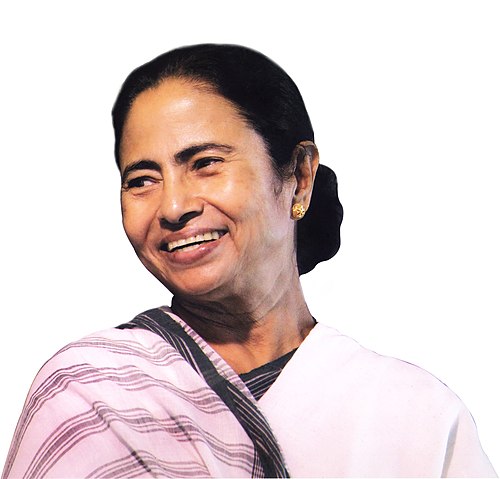
Mamata Banerjee, an Indian politician, has held the position of chief minister of West Bengal since 20 May 2011. She is the first woman to occupy the position. Mamata Banerjee initially assumed the position of Chief Minister of West Bengal in 2011.
- After leaving the Indian National Congress, she created the All India Trinamool Congress (AITC or TMC) in 1998, serving as its inaugural chairman. She is frequently called “Didi” (meaning elder sister in Bengali).
- Banerjee was the first woman to hold the position of minister of railways twice. She holds the positions of Minister of Human Resource Development, Youth Affairs and Sports, Women and Child Development, and Minister of Coal, making her the second female coal minister in India’s cabinet.
- She gained notoriety after protesting the former Communist-led government of West Bengal’s plans of industrialization through land acquisition for Special Economic Zones at the expense of agriculturalists and farmers in Singur.
- Banerjee defeated the Left Front administration, which had been headed by the Communist Party of India (Marxist) for 34 years and was the longest-serving democratically elected communist government in the world, in a landslide win for the AITC coalition in West Bengal in 2011.
- She served as a representative for Bhabanipur in the West Bengal Legislative Assembly from 2011 to 2021. In the West Bengal Assembly elections of 2021, she ran for but was defeated by Suvendu Adhikari of the BJP, despite her party winning a sizable majority of seats.
- She is the third West Bengal Chief Minister to lose an election in her home district, following Buddhadeb Bhattacharjee in 2011 and Prafulla Chandra Sen in 1967.
- In the Calcutta High Court, Mamata contested the outcome of the Nandigram Constituency, and the case is still pending. During the West Bengal assembly elections in 2021, she drove her party to a resounding win.
She has maintained a very austere lifestyle throughout her political career, wearing simple traditional Bengali attire and shunning comforts. Banerjee also writes poetry. She has so far had several of her novels published. She received the Paschimbanga Akademy Award in 2022 for “Kabita Bitan,” a collection of 946 poetry.
She also taught herself to paint. Her artwork is frequently auctioned off. She also writes lyrics, and most of them are focused on “Motherland” and “Durga Puja”. She is most known for her song “Maa Go Tumi Sarbojanin,” which was sung by Shreya Ghoshal.
Read about the Election Commission of India in our blog on Article 324 of Indian Constitution.
5. Sheila Dikshit
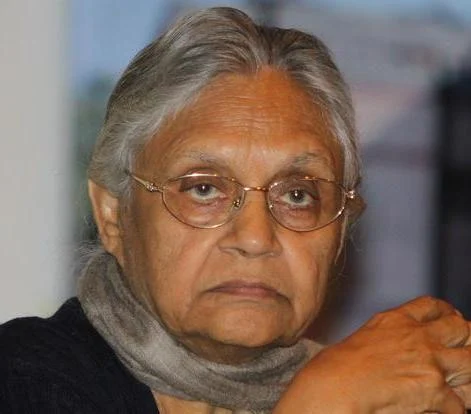
Sheila Dikshit, an Indian politician was the longest-serving Chief Minister in Delhi. She was also the first Indian woman to serve as chief minister. She held this position for fifteen years, starting in 1998. She led the Congress party’s three consecutive electoral victories from Delhi. This makes her the longest-serving female chief minister in the country. She resigned after a public fallout in 2006.
- Rajiv Gandhi personally selected her to serve on his council of ministers after he was elected prime minister in 1984. Sheila Dikshit began her career serving on the Estimates Committee of the Lok Sabha.
- Later, she was the chair of the Implementation Committee of the Forty Years of Independence. She has been a leader in politics and was also India’s representative on the United Nations Commission on the Status of Women.
- She held this position for five years. In her later years, Dikshit was a Minister-of-State in the office of the Prime Minister. She also facilitated the construction of two hostels for working women in Delhi.
- She was appointed Delhi’s Chief Minister in 1998, a role she maintained until 2013. In the 1998 and 2003 Assembly elections, Dikshit ran as the candidate for Gole Market Assembly, and beginning in 2008, she ran as the candidate for New Delhi Assembly.
- Dikshit lost the Delhi Legislative Assembly elections in December 2013 to the Bharatiya Janata Party, despite the fact that the Aam Aadmi Party and the INC collaborated to establish a minority administration led by Arvind Kejriwal.
- In 2014, she briefly held the position of Governor of Kerala. Dikshit later announced herself the Indian National Congress’s chief ministerial candidate for the 2017 election for the Uttar Pradesh Legislative Assembly, however, she later withdrew her name from contention.
- She assumed her position as president of the Delhi Pradesh Congress Committee on January 10 and held it till her passing in July of the following year.
Political experts and Delhiites alike were shocked to hear about Sheila Dikshit’s passing. The eulogy of the former mayor in Delhi has already attracted a lot. The Prime Minister himself also expressed condolences to the family. In order to resolve her cardiac arrhythmia, Dikshit was brought to Fortis Escorts Heart Institute on 19 July 2019 and she was put on a ventilator shortly after her admission.
Her health briefly stabilized, but she did not recover from repeated cardiac arrests, and over the time that followed, things became worse. Later, on 20 July 20, 2019, she passed away at the age of 81. When she passed away, the Delhi government declared a two-day period of mourning and gave her a state funeral.
Although she was not a prominent politician, she managed to develop a large infrastructure in the city. She initiated a series of social welfare with the city’s residents’ welfare associations.
Our other articles that will help you:
6. Jayalalitha Jayaram
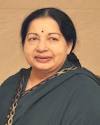
Between 1991 and 2016, the Indian politician and actress Jayaram Jayalalitha presided as Tamil Nadu’s chief minister for more than fourteen years spanning six terms. She served as the general secretary of the Dravidian party All India Anna Dravida Munnetra Kazhagam (AIADMK) beginning on February 9 of that year.
- Her followers saw her as their “Amma” (Mother) and “Puratchi Thalaivi” (Revolutionary leader). Media and opposition critics charged her with cultivating a personality cult and demanding complete obedience from AIADMK legislators and ministers, who frequently publicly bowed down to her.
- She was raised in a middle-class household and dreamed of a career as a lawyer or academic. She was interested in English theater and passed the state’s school leaving exams. After completing her college studies, she worked in film productions and even did some acting in foreign languages.
- She was elected to the Tamil Nadu Legislative Assembly in 1989. In 1991, she became the first woman to serve as Leader of the Opposition. Jayalalitha was supported by the majority of Tamil-speaking people.
- During this period, the popular cradle-baby plan came into existence, allowing women to secretly surrender their babies for adoption. The AIADMK was almost completely defeated in the 1996 election, and Jayalalithaa also lost her seat.
- 2001 saw the restoration of the AIADMK to power, but Jayalalithaa was personally forbidden from running owing to the corruption trials. She took office as chief minister in September 2001, but shortly afterward, she was found to be ineligible to hold office and was compelled to hand over the reins to minister O. Panneerselvam.
- Six months after being found not guilty, Jayalalitha was reinstated as chief minister to serve the remainder of her tenure. Her government lost support as a result of its reputation for brutality toward political opponents, many of whom were detained in late-night raids.
- Following the AIADMK’s resounding victory in the 2011 assembly election, she was sworn in for a fourth term as chief minister. Her administration gained notoriety for its comprehensive social welfare program, which featured various subsidized “Amma”-branded products such as canteens, bottled water, salt, and cement.
- She was found guilty in a case involving disproportionate assets three years into her term, making her unable to continue serving in that capacity. She was exonerated in May 2015 and re-elected chief minister.
- She was elected back to the office in the 2016 assembly election, making history as the first Tamil Nadu chief minister to do so since M.G.R. in 1984.
She had a serious illness in September of that year, spent 75 days in the hospital, and passed away on 5 December 2016 from a cardiac attack, making history as India’s first female chief minister to die in office.
Also Read: Women Freedom Fighters of Kerala.
7. Mayawati
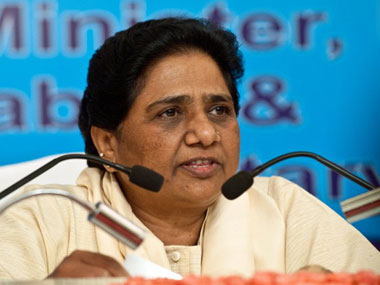
Mayawati is an Indian politician who served four terms as the Chief Minister of the state of Uttar Pradesh. She is loved by many Indians and has many supporters. She serves as the president of the Bahujan Samaj Party (BSP), a group that advocates for social reform for Bahujans (also referred to as members of Other Backward Castes, Scheduled Castes, and Scheduled Tribes, as well as members of these castes who have become minorities.
- She served as chief minister for a brief while in 1995, a second time in 1997, and then from 2002 to 2003, and lastly from 2007 to 2012.
- P. V. Narasimha Rao, a former Indian prime minister, referred to her emergence from modest beginnings as a “miracle of democracy.”
- Kanshi Ram and the Samajwadi Party formed a coalition in 1993, and she was appointed chief minister of Uttar Pradesh in 1995 as a result. She was India’s first female chief minister from a Scheduled Caste.
- She resigned from her position as party leader on 7 March 2012, after her party, the Samajwadi Party, defeated her in the 2012 elections for the legislative assembly. She was chosen to serve in the Rajya Sabha, the upper chamber of the Indian parliament, later that month.
- For her efforts to eradicate polio, Mayawati received the Paul Harris Fellow Award in 2003 from Rotary International, UNICEF, and the World Health Organization.
- Rajarshi Shahu Memorial Trust also presented Mayawati with the Rajarshi Shahu Award.
- Mayawati was included in 2008 as number 59 on Forbes’ list of the 100 most influential women in the world.
- “Mere Sangarshmai Jeevan Evam Bahujan Movement Ka Safarnama”, a three-volume autobiography, and “A Travelogue of My Struggle-ridden Life and of Bahujan Samaj”, a two-volume English autobiography, are both written by her. Ajoy Bose, a seasoned journalist, wrote “Behenji: A Political Biography of Mayawati”.
Both acclaim and criticism have been directed towards her leadership. She is referred to as Behen-ji by millions of Dalits throughout India who see her as an inspiration. Her fundraising efforts on behalf of her party have received accolades, and many of her fans have celebrated her birthdays. It has also been argued that the increase in her own fortune and the riches of her party is a sign of corruption.
You might also like to read about: Female Freedom Fighters of Uttarakhand.
8. Vasundhara Raje Scindia
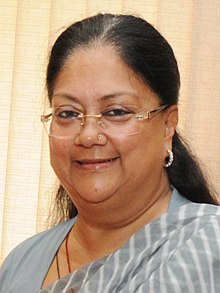
Vasundhara Raje Scindia, an Indian politician, was the chief minister for Rajasthan for two terms. Before becoming chief Minister, she was in Atal Bihari Vajpayee‘s cabinet and was the country’s first Minister of Micro, Small, and Medium Enterprises. She is a Scindia family member and the matriarch of the Dholpur-based Bamraulia clan.
- She was born in Bombay on March 8, 1953. (now Mumbai). She is the daughter of Jivajirao Scindia-Shinde, Maharaja of Gwalior, and Vijayaraje Scindia-Shinde, members of the illustrious Scindia royal Maratha dynasty.
- Shee finished her schooling at Presentation Convent School in Kodaikanal, Tamil Nadu, and went on to graduate from the Sophia College for Women in Mumbai with degrees in economics and political science.
- She started participating in Indian politics in 1984. She was first appointed to the newly established Bharatiya Janata Party’s national executive. She was also chosen to represent Dholpur in the 8th Rajasthan Assembly. She was named vice president of the Rajasthan BJP’s Yuva Morcha in the same year.
She was awarded the “Women Together Award” by the UN in 2007 for her contributions to the empowerment of women. At the 52nd Skoch Summit in 2018, she was presented with the “Best Chief Minister of the Year” Award. The historian Vijay Nahar wrote a biography of Vasundhara Raje titled “Vasundhara Raje aur Vikasit Rajasthan”, which was published by Prabhat Prakashan.
If you are interested in History and are planning to take it as an optional for UPSC, then don’t forget top check our following blogs:
9. Pratibha Patil
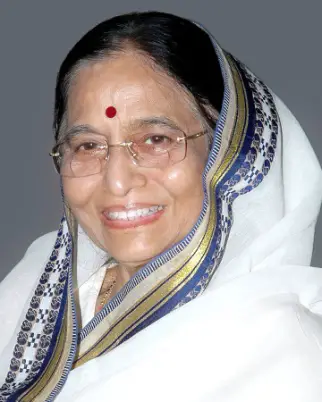
Pratibha Patil is an Indian politician and was the first woman to serve as the President of India, from 2007 to 2012. She was born on December 19, 1934, in Jalgaon, Maharashtra, India.
- She has a long history of political involvement, having been elected to the Maharashtra Legislative Assembly in 1962, and serving as a member of both the Rajya Sabha (the upper house of the Indian parliament) and the Lok Sabha (the lower house of the Indian parliament) at various points throughout her career.
- In 2007, she was nominated by the ruling United Progressive Alliance (UPA) coalition to be the candidate for President of India. Her nomination was initially met with some controversy due to her lack of international experience and her links to a cooperative bank that had been accused of financial irregularities.
- However, she ultimately won the election by a wide margin, with 65% of the electoral college vote.
- During her presidency, she focused on issues such as education, healthcare, and rural development. She was also known for her efforts to promote gender equality and empower women.
After her presidency ended in 2012, Patil retired from politics. Today, she is remembered as a trailblazer and an important figure in the history of Indian politics, particularly for breaking the gender barrier to become the first woman to hold the highest office in the land.
Read about the President’s Rule in India in our blog on Article 356 of Indian Constitution.
10. Nirmala Sitharaman
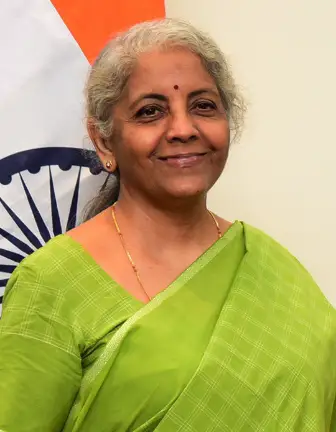
Nirmala Sitharaman is an Indian politician and the current Minister of Finance and Corporate Affairs in the Government of India. She was born on August 18, 1959, in Madurai, Tamil Nadu, India.
- She has a diverse educational background, having earned a bachelor’s degree in economics from Seethalakshmi Ramaswamy College in Tiruchirapalli and a master’s degree in economics from Jawaharlal Nehru University in New Delhi.
- She then went on to complete a Ph.D. in Indo-European textile trade within the GATT framework from the School of Social Sciences at Jawaharlal Nehru University.
- She began her political career in the Bharatiya Janata Party (BJP) in the early 2000s, and rose quickly through the ranks. She served as a spokesperson for the party and was appointed as a member of the National Executive Committee of the BJP. In 2014, she was elected to the Rajya Sabha, the upper house of the Indian parliament.
- In September 2017, Sitharaman was appointed as the Minister of Defence, becoming the first woman to hold the post in the history of independent India. During her tenure as Defence Minister, she oversaw a number of important initiatives, including the modernization of the armed forces, the implementation of the “One Rank One Pension” scheme for retired military personnel, and the launch of the “Mission Raksha Gyan Shakti” initiative to promote innovation and technology development in the defence sector.
- In May 2019, she was appointed as the Minister of Finance and Corporate Affairs in the Government of India, making her the first woman to hold this position. As Finance Minister, she has been responsible for managing India’s economy and implementing important economic policies, such as the Goods and Services Tax (GST) and the Atmanirbhar Bharat (Self-Reliant India) campaign.
Sitharaman is widely regarded as one of the most influential and powerful women in Indian politics today, and has received numerous awards and honors for her contributions to public service.
You might also like to read about the Finance Commission of India in our blog on Article 280 of Indian Constitution.
Summary
The contribution of women to the struggle for freedom as well as the participation of women in politics have proved to be of immense worth to the formation and the smooth governance of India. There are many incredible women we have to be thankful to, for the freedom that we enjoy today and the security that is promised to us.
Our duty is to not forget the brilliance of women and sideline them as unsung heroes. Our duty is to celebrate the crucial roles that they play in modern Indian history and their role in politics as freedom fighters, politicians, activists, and social reformers.
Don’t forget to read our blog on UPSC Preparation for Working Professionals if you’re trying to ace UPSC with a full-time job.
FAQs on Female National Leaders of India
Who was the first female national leader of India?
The first female national leader of India was Indira Gandhi. She served as the Prime Minister of India from 1966 to 1977 and then again from 1980 until her assassination in 1984.
How many female national leaders has India had?
India has had many female national leaders but in terms of official positions, it has had one female Prime Minister, Indira Gandhi, and one female President, Pratibha Patil till now.
Why are there so few female national leaders in India?
There are several factors that contribute to the under-representation of women in national leadership positions in India. These include cultural and social attitudes towards women, lack of access to education and resources, and the influence of patriarchal power structures in politics and society. However, there has been progress in recent years, with more women being elected to positions of power at the local and state level, and increased representation of women in Parliament.
What impact have female national leaders had on India?
Female national leaders have played an important role in shaping India’s political landscape and advancing the rights of women and other marginalized groups. Overall, female national leaders have helped to increase awareness of issues affecting women and other marginalized groups, and have contributed to a more equitable and inclusive society in India.
What can be done to increase the representation of women in national leadership positions in India?
There are several steps that can be taken to increase the representation of women in national leadership positions in India. These include:
1) Encouraging greater participation of women in politics and public life through awareness-raising campaigns and educational initiatives
2) Implementing policies that prioritize the needs and rights of women and other marginalized groups, such as quotas for female representation in political parties and elected bodies
3) Addressing cultural and social attitudes that limit women’s participation in politics and public life, such as gender stereotypes and discrimination
4) Providing greater access to education and resources for women, particularly in rural areas, to enable them to pursue leadership positions.


